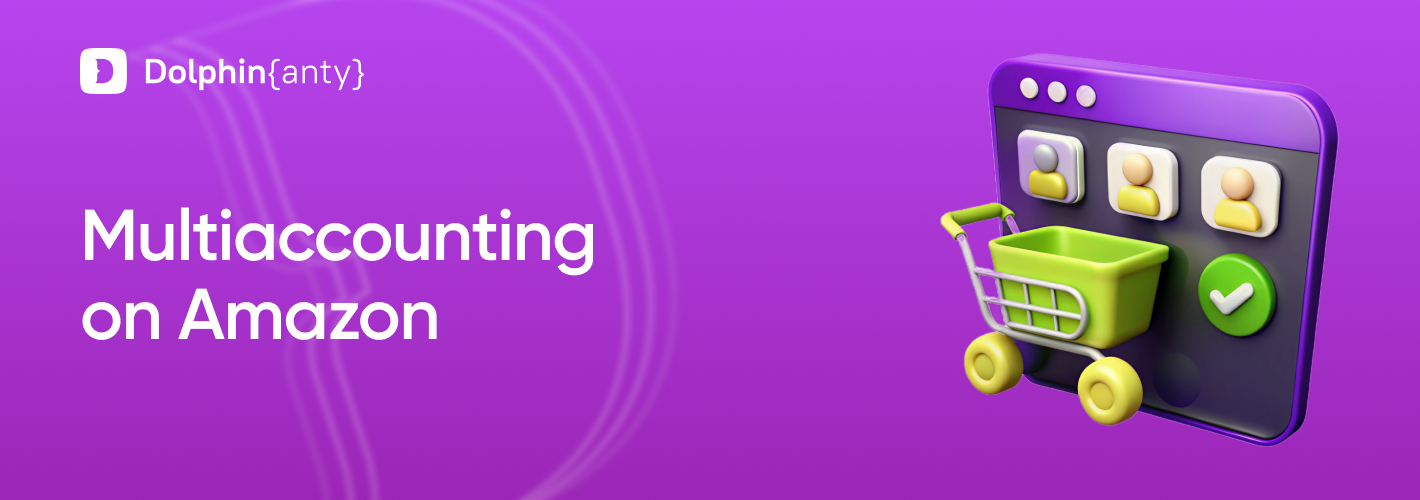Multiaccounting on Amazon
Blog » Multiaccounting on Amazon
Multiaccounting has become a common practice in e-commerce, especially on Amazon, which is the world’s largest marketplace. Sellers use it to work across different niches, promote various product lines or test new marketing strategies. Doing all of this under a single account is often too risky, so many prefer running multiple profiles at once. But this strategy comes with a downside: Amazon takes a very ☹️ strict stance against multiaccounting and once violations are detected, all linked accounts get suspended.
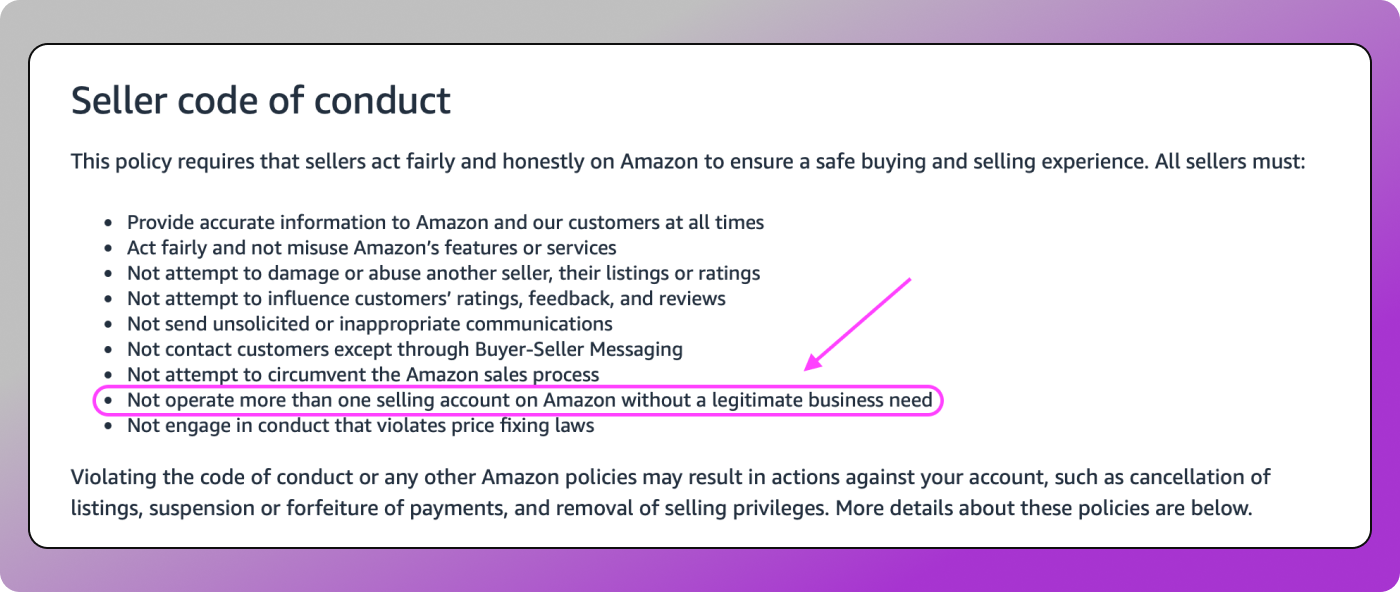
This rule is clearly stated in Amazon’s 📔 Seller Code of Conduct. One way to bypass it is by setting up separate stores and legal entities in different countries. But that’s not always convenient or aligned with what sellers actually need. Luckily, there’s a way out. But first, let’s figure out why multiaccounting on Amazon is even necessary.
Why Create Multiple Accounts on Amazon?
The reasons can vary: some of them are perfectly legitimate, others are not. Even though Amazon closely monitors compliance (and has massive resources and protective systems for this), many sellers still take the risk.
Legitimate Business Reasons 👨💻
A lot of sellers create multiple accounts purely for business purposes. If you manage several brands or product lines, it’s much easier to run them separately: different product listings, ad campaigns, cost and profit tracking. Separate accounts also allow you to test new niches and marketing hypotheses without jeopardizing your main store. It can also simplify operations when one account is focused on B2C and another on wholesale or corporate sales.
Geography 🌏
Working on international markets often requires splitting accounts, since each market comes with different return policies, logistics and labeling rules. Sometimes it’s simply easier to run separate stores for each jurisdiction. This is the only case where Amazon officially allows multiple accounts without risking a ban. Separation is also helpful when you have different warehouses, suppliers or managers as this approach is reducing operational confusion and making reporting more transparent.
Review Manipulation ⭐
Multiaccounting is also used for gray-area tactics like manipulating reviews or buying your own products to boost rankings. Amazon actively monitors this and punishes it severely with temporary suspensions or even permanent bans, including frozen funds. If this is the route taken, accounts should never be linked to one another.
Reselling 💳
Another common use case is reselling — buying products at a low price in one region and reselling them at a higher price in another. This can be a real source of profit, especially during sales or when price differences between markets are significant. Despite the operational and legal challenges (customs, VAT, logistics, returns), many sellers see it as a strong revenue stream.
Customer Insights 🙋♂️
Running multiple accounts also helps sellers look at the market from different perspectives. Different accounts mean different regions, niches and audience segments. This allows sellers to see what products buyers are most interested in, how they react to pricing, promotions, product descriptions and which geo- and demographic groups show the highest demand. That’s how you can build an accurate customer profile: age, gender, preferences, buying behavior and even likelihood of repeat purchases.
Still, it’s important to remember that if multiaccounts are used for manipulative schemes, Amazon may penalize not just one profile, but all connected ones.
Useful Services for Amazon Multiaccounts
To manage multiple accounts effectively and scale a business, sellers often rely on specialized services. Here are some of the most popular.
Helium 10 is a comprehensive toolkit for sales analytics, niche and keyword research. It helps track competitor dynamics, spot trending products and optimize listings for better visibility. A free 7-day trial is available.

Jungle Scout helps evaluate product potential and market trends, providing real sales data and competitor rankings to make purchase planning and scaling easier.
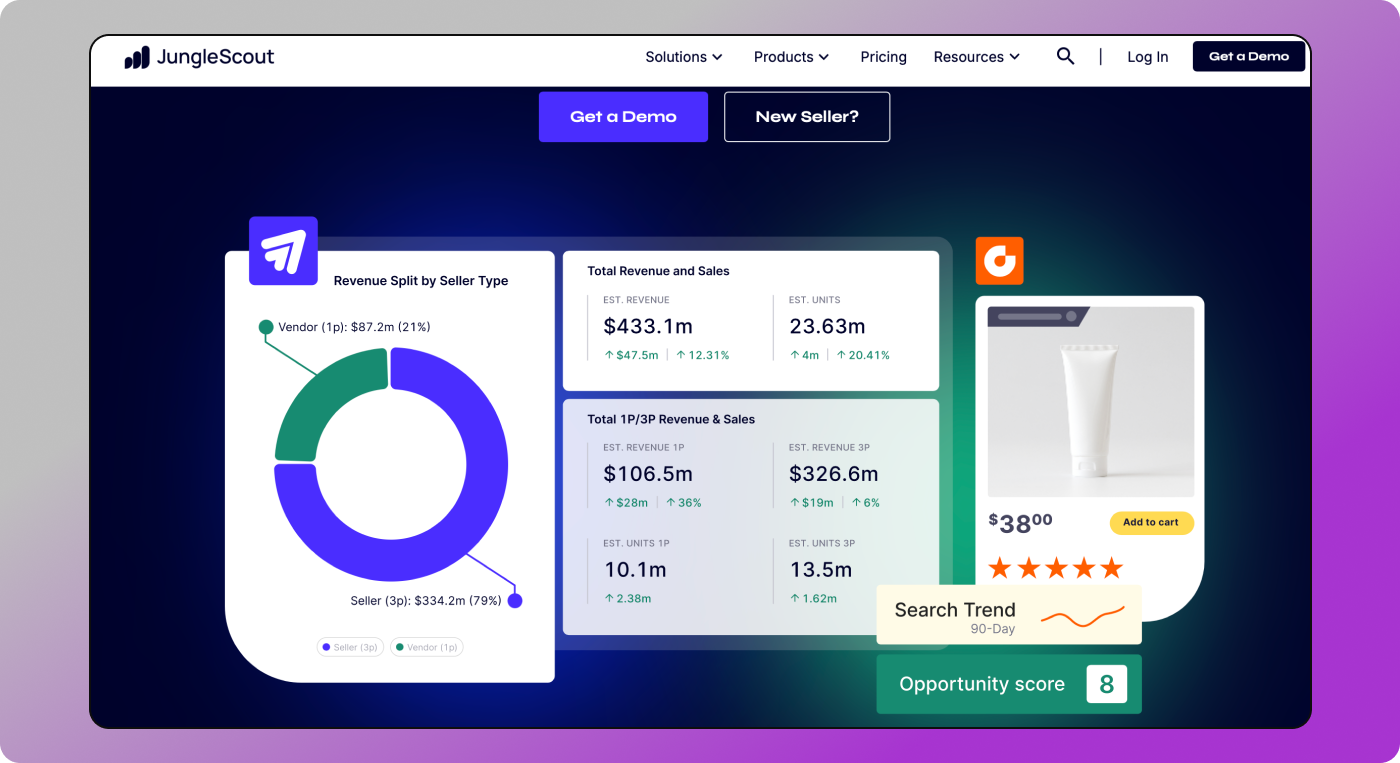
Keepa is used to track prices and sales history on Amazon, showing price trends and discounts. It helps with purchasing decisions, demand forecasting and pricing management.
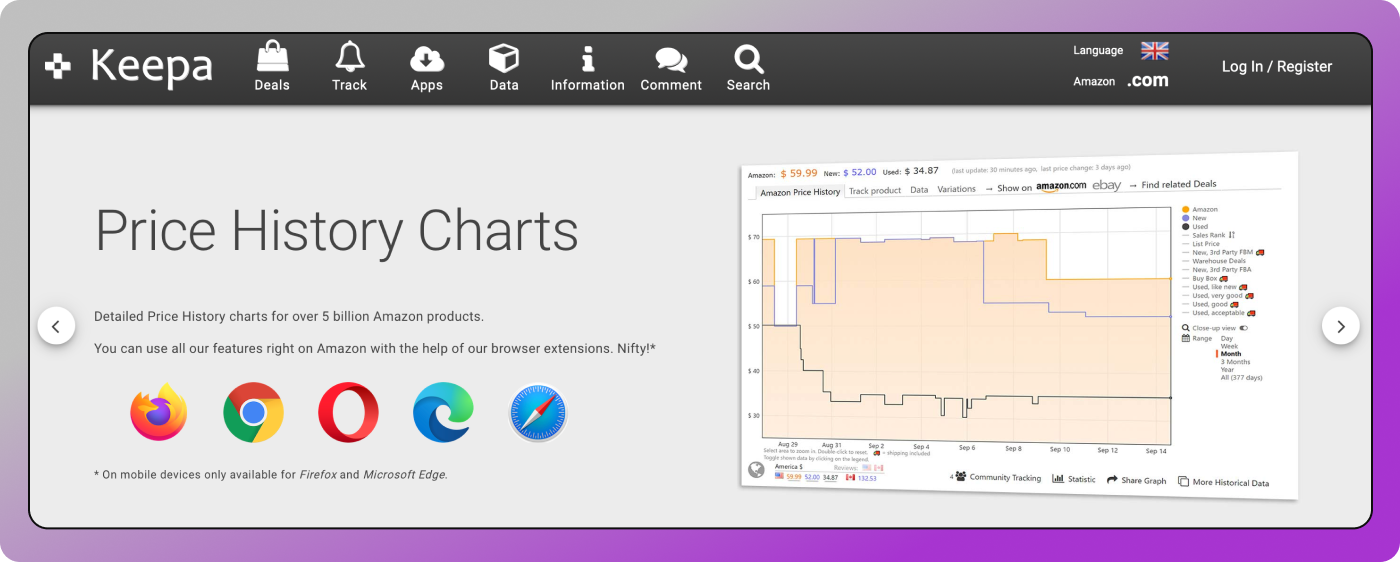
Other useful tools include:
- Sellerise is a platform for managing multiple accounts, automating reports/tasks, monitoring KPIs and ad campaigns.
- DataDive is used to collect and structure data directly from Amazon via API, providing insights into sales, keywords, stock levels and product performance.
- Sellerboard focuses on profit and expense analytics, tracks returns, ad campaigns, and inventory levels, giving a full picture of each account’s financials.
Additionally, many sellers use Power BI, ODA and CRM systems to centralize data from different sources and visualize results.
Together, these tools give sellers a complete view of their business and make it possible to safely scale multiple accounts at once.
Dolphin Anty as a Solution for Multiaccounting on Amazon
🚀 Dolphin Anty is a multiaccounting tool that helps sellers safely scale their Amazon businesses. It’s especially useful for those managing several profiles at once, testing different niches and markets and analyzing competitors.
Creating Unique Profiles
With Dolphin Anty you can quickly create profiles with unique device fingerprints including such parameters as browser settings, cookies, geolocation, IPs and others. Each profile is fully isolated, which reduces the risk that Amazon will link the accounts together.
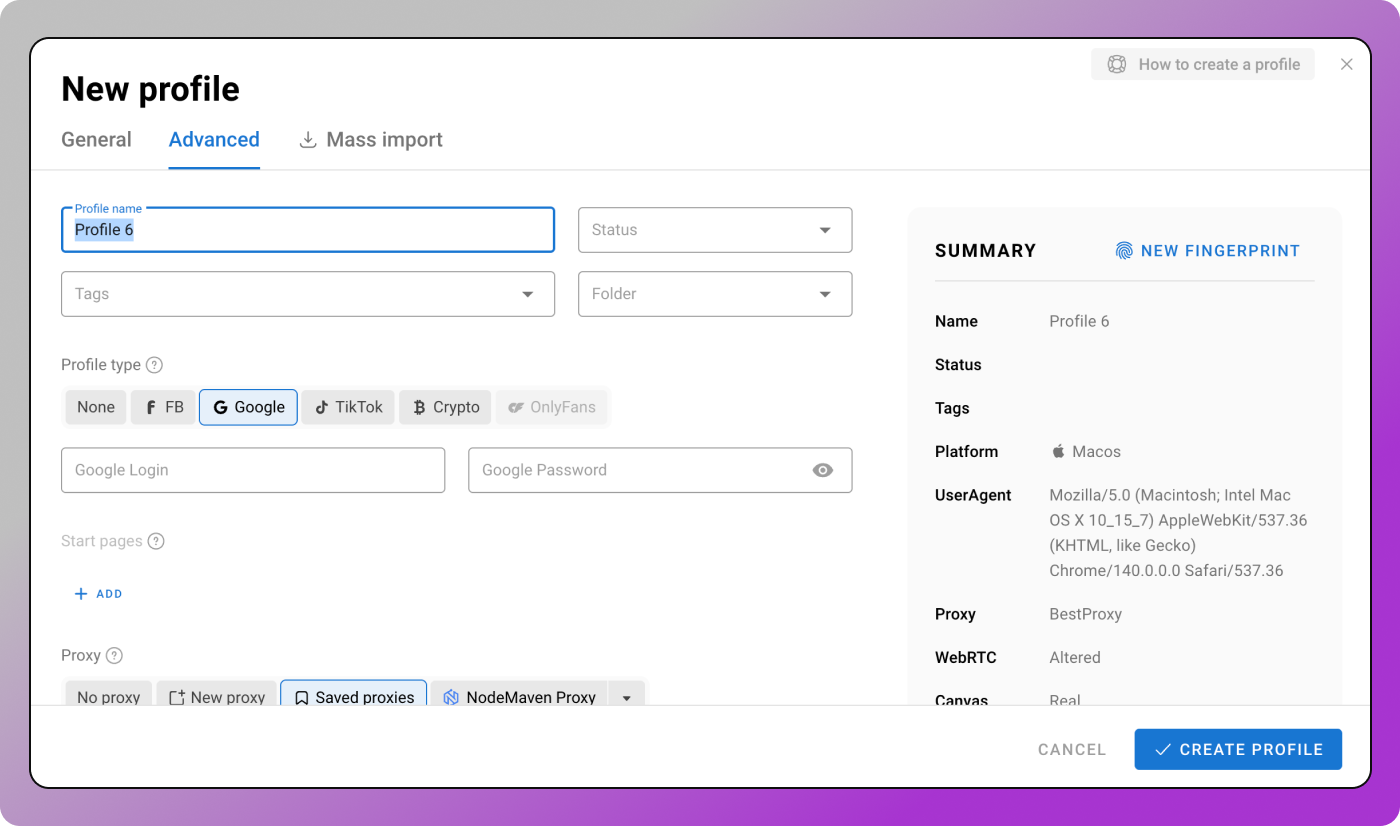
This makes it possible to safely run multiple stores, operate in different niches and use separate marketing strategies.
Process Automation
Dolphin Anty offers ⚙️ automation tools for routine operations:
- Cookie robot that automatically collects cookies from websites, making a profile appear as close to a real user as possible;
- Scenarios are the scripts that create sequences of automated actions. They help automate repetitive tasks such as creating and populating accounts, boosting behavioral metrics, uploading product listings and much more;
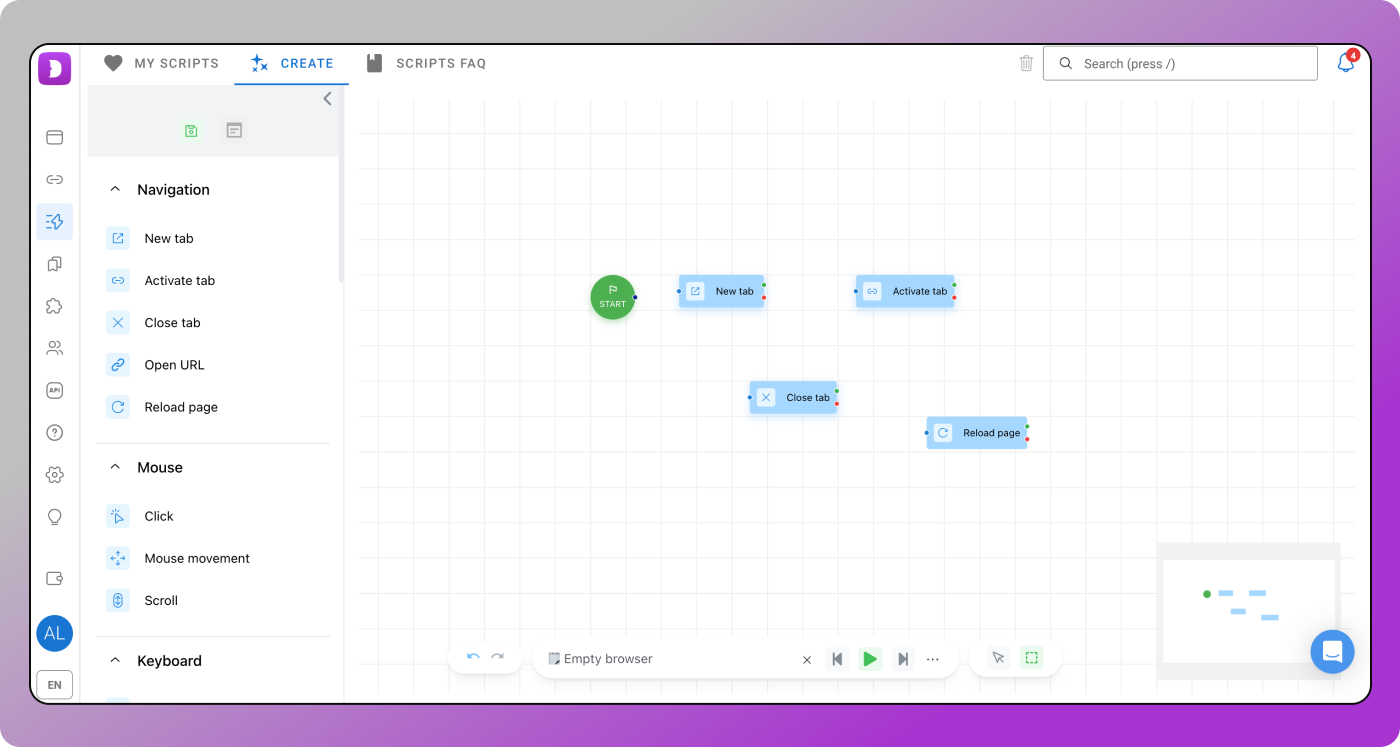
- Synchronizer that replicates everything happening in the master account across all other accounts.
This saves time and reduces the risk of errors, especially when a seller manages dozens of accounts at once.
Proxy and Geo Settings Support
Dolphin Anty uses 🔗 proxies to manage regional settings, making it easier to test different markets. Sellers can check prices, product availability and the competitive landscape across regions using a single interface without manually setting up VPNs or sourcing separate proxy services. This is particularly useful for discovering new products, suppliers and analyzing demand in different countries.
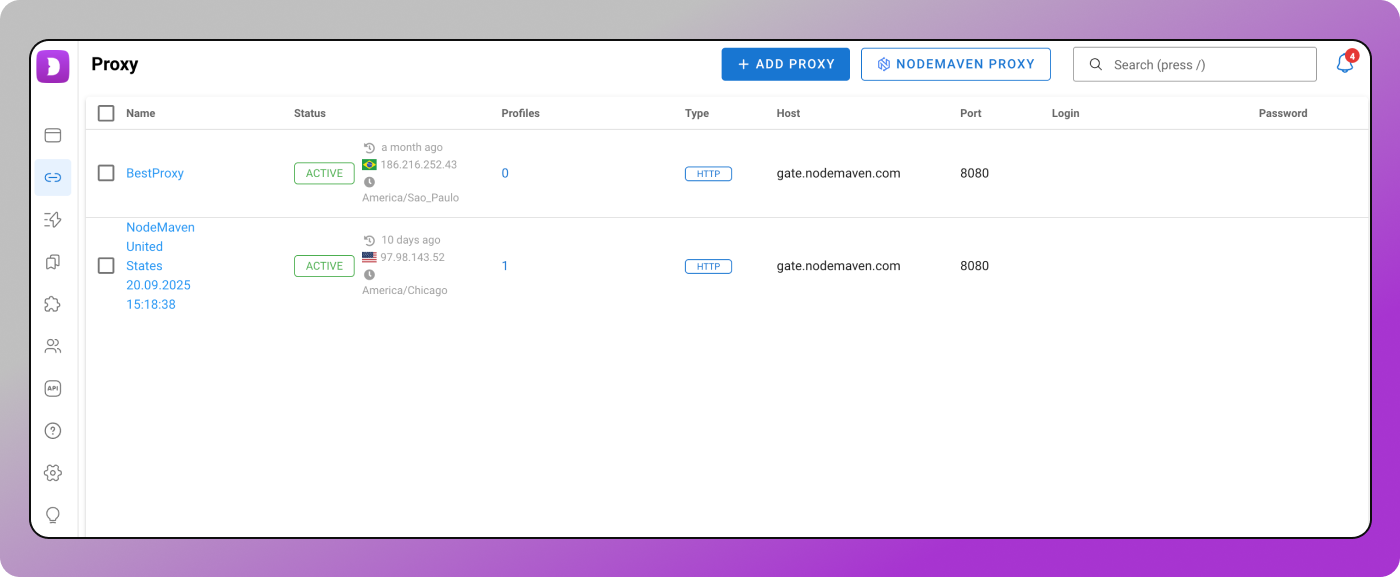
Dolphin Anty comes with integrated proxy providers offering free traffic, which can be set up in just a few clicks.
Conclusion
Amazon is a powerful and competitive marketplace, where multiaccounting can be an effective way to earn. At the same time, it is strictly monitored. To succeed, a seller can’t just create multiple profiles as it’s crucial to understand how the platform works, use trusted tools for analytics, tracking and sales management and leverage solutions like 🔥 Dolphin Anty to safely manage multiple accounts. Only a comprehensive approach allows you to scale your business, minimize risks and make informed decisions at every stage.
